#mafalda of savoy
Text

OTMAA Contemporaries: Princess Mafalda of Savoy, born 1902.
27 notes
·
View notes
Photo

Elena on Montenegro, Queen of Italy with her two eldest daughters Yolanda and Mafalda.
#elena of montenegro#Mafalda of Savoy#yolanda of savoy#italian monarchy#house of savoy#italy#long live the queue
25 notes
·
View notes
Photo

Regal Weddings Part 3
Princess Mafalda of Savoy and Philipp, Landgrave of Hesse
3 notes
·
View notes
Note
In my wip, the royal family was overthrown and the new regime began a purge of the national religion (rather than chosen by the gods, RF was descended from them).
Similar to how criminals were thrown into forced labor camps, the new regime did the same to surviving nobles, young children of the royal family, and any who were loyal to the old religion/family - if not outright executing them.
Is this something that could feasibly occur?
Yes. And it did happen during WWII. Some royals were imprisoned in concentration camps and prison camps such as Princess Antonia of Luxembourg and Princess Mafalda of Savoy.
10 notes
·
View notes
Text
Partial List of Royal Saints
Saint Abgar (died c. AD 50) - King of Edessa, first known Christian monarch
Saint Adelaide of Italy (931 - 999) - Holy Roman Empress as wife of Otto the Great
Saint Ælfgifu of Shaftesbury (died 944) - Queen of the English as wife of King Edmund I
Saint Æthelberht of Kent (c. 550 - 616) - King of Kent
Saint Æthelberht of East Anglia (died 794) - King of East Anglia
Saint Agnes of Bohemia (1211 - 1282) - Bohemian Princess, descendant of Saint Ludmila and Saint Wenceslaus, first cousin of Saint Elizabeth of Hungary
Saint Bertha of Kent (c. 565 - c. 601) - Frankish Princess and Queen of Kent as wife of Saint Æthelberht
Saint Canute (c. 1042 - 1086) - King of Denmark
Saint Canute Lavard (1096 - 1131) - Danish Prince
Saint Casimir Jagiellon (1458 - 1484) - Polish Prince
Saint Cormac (died 908) - King of Munster
Saint Clotilde (c. 474 - 545) - Queen of the Franks as wife of Clovis I
Saint Cunigunde of Luxembourg (c. 975 - 1033) - Holy Roman Empress as wife of Saint Henry II
Saint Edmund the Martyr (died 869) - King of East Anglia
Saint Edward the Confessor (c. 1003 - 1066) - King of England
Saint Edward the Martyr (c. 962 - 978) - King of the English
Saint Elesbaan (Kaleb of Axum) (6th century) - King of Axum
Saint Elizabeth of Hungary (1207 - 1231) - Princess of Hungary and Landgravine of Thuringia
Saint Elizabeth of Portugal (1271 - 1336) - Princess of Aragon and Queen Consort of Portugal
Saint Emeric (c. 1007 - 1031) - Prince of Hungary and son of Saint Stephen of Hungary
Saint Eric IX (died 1160) - King of Sweden
Saint Ferdinand (c. 1199 - 1252) - King of Castile and Toledo
Blessed Gisela of Hungary (c. 985 - 1065) - Queen Consort of Hungary as wife of Saint Stephen of Hungary
Saint Helena (c. 246 - c. 330) - Roman Empress and mother of Constantine the Great
Saint Henry II (973 - 1024) - Holy Roman Emperor
Saint Isabelle of France (1224 - 1270) - Princess of France and younger sister of Saint Louis IX
Saint Jadwiga (Hedwig) (c. 1373 - 1399) - Queen of Poland
Saint Joan of Valois (1464 - 1505) - French Princess and briefly Queen Consort as wife of Louis XII
Blessed Joanna of Portugal (1452 - 1490) - Portuguese princess who served as temporary regent for her father King Alfonso V
Blessed Karl of Austria (1887 - 1922) - Emperor of Austria, King of Hungary, King of Croatia, and King of Bohemia
Saint Kinga of Poland (1224 - 1292) - Hungarian Princess, wife of Bolesław V of Poland and niece of Saint Elizabeth of Hungary
Saint Ladislaus (c. 1040 - 1095) - King of Hungary and King of Croatia
Saint Louis IX (1214 - 1270) - King of France
Saint Ludmila (c. 860 - 921) - Czech Princess and grandmother of Saint Wenceslaus, Duke of Bohemia
Blessed Mafalda of Portugal (c. 1195 - 1256) - Portuguese Princess and Queen Consort of Castile, sister of Blessed Theresa of Portugal
Saint Margaret of Hungary (1242 - 1270) - Hungarian Princess, younger sister of Saint Kinga of Poland and niece of Saint Elizabeth of Hungary
Saint Margaret of Scotland (c. 1045 - 1093) - English Princess and Queen Consort of Scotland
Blessed Maria Cristina of Savoy (1812 - 1836) - Sardinian Princess and Queen Consort of the Two Sicilies
Saint Matilda of Ringelheim (c. 892 - 968) - Saxon noblewoman and Queen of East Francia as wife of Henry I
Saint Olaf (c. 995 - 1030) - King of Norway
Saint Olga of Kiev (c. 900 - 969) - Grand Princess of Kiev and regent for her son Sviatoslav I, grandmother of Saint Vladimir the Great
Saint Oswald (c. 604 - 642) - King of Northumbria
Saint Radegund (c. 520 - 587) - Thuringian Princess and Frankish Queen
Saint Sigismund of Burgundy (died 524) - King of the Burgundians
Saint Stephen of Hungary (c. 975 - 1038) - King of Hungary
Blessed Theresa of Portugal (1176 - 1250) - Portuguese Princess and Queen of León as wife of King Alfonso IX, sister of Blessed Mafalda
Saint Vladimir the Great (c. 958 - 1015) - Grand Prince of Kiev and grandson of Saint Olga of Kiev
26 notes
·
View notes
Text

morning, folks ! it feels v nice to be able to greet everybody in a slightly diff way for once, and fingers crossed work goes back to a normal schedule to allow that ... eventually. my new fave way of advertising might just be casting all the characters i REALLY wanna see, so for today, how about ... jasmin savoy brown as alicia spinnet ! michelle yeoh as arabella figg ! alba baptista as mafalda prewett ! tyler posey as michael corner ! amita suman as mandy brocklehurst ! sendhil ramamurthy as amos diggory ! moses ingram as angelina johnson ! nico hiraga as ernie macmillan ! go min si as gabrielle delacour ! dylan arnold as adrian pucey ! morena baccarin as rolanda hooch !
#hp rp#harry potter rp#hp roleplay#appless rp#fandom rp#canon rp#oc rp#mumu rp#dark rp#war rp#magic rp#fantasy rp#book rp#lsrp#lsrpg#literate rp#literate rpg#admin r.
2 notes
·
View notes
Photo

Dona Maria Pia (16 October 1847 – 5 July 1911) was by birth an Italian princess of the House of Savoy and was Queen of Portugal as spouse of King Luís I of Portugal. On the day of her baptism, Pope Pius IX, her godfather, gave her a Golden Rose. Maria Pia was married to Luís on the 6 October 1862 in Lisbon. She was the grand mistress of the Order of Saint Isabel. She was the third queen of the House of Savoy on the Portuguese throne, after Mafalda and Marie-Françoise of Savoy-Nemours.
5 notes
·
View notes
Text
Pasta week day 7!
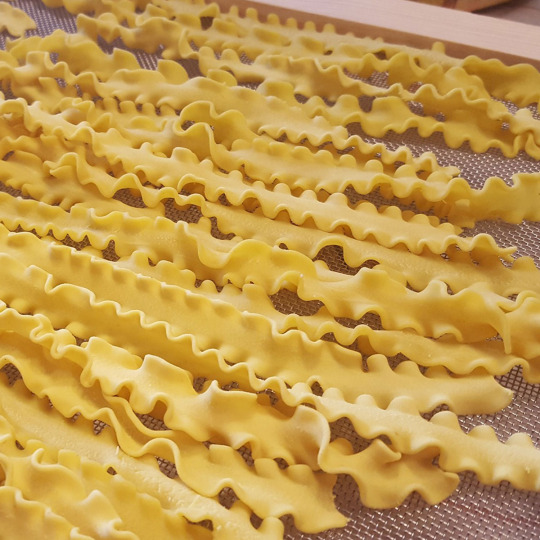
Name: mafaldine or reginette or mafalda or mafalde
Meaning: little queens
Fun fact: it was named in honor of Princess Mafalda of Savoy
New ask/rb game: your favorite kind of pasta? From this week or elsewhere I don't really care.
2 notes
·
View notes
Note
So, I am still working on a character, who I plan comes from an alternative version of Italy, where the monarchy still exists. And I wanted to ask you, do you think it sounds realistic if the current head of the monarchy (probably a constitutional or parliamentary monarchy) would have the name "Queen Mafalda II"? (Having chosen the herself during the coronation in honor of her ancestor who has died in WWII)
Well, if you want to honor the poor Princess Mafalda, then your character should be named Mafalda III, because there were two of them: the Queen of Portugual, and the one you mentioned. Considering that they were both Savoys and Mafalda is in no way an Italian name (the Italian equivalent is Matilde), I suspsect that the princess was named after the queen of the 12th century.
Poor young Mafalda. She died a horrible death :(
#also to be clear italian monarchs don't choose their names like popes do#but if it's specifically your character who changed her name it could work
3 notes
·
View notes
Text
MAFALDA OF SAVOY // PRINCESS
“She was the second daughter of King Victor Emmanuel III of Italy and his wife Elena of Montenegro. In 1925, at the age of 22, she married the Landgrave of Hesse, Philipp. In 1943, during WWII, she imprisoned in the Buchenwald concentration camp, where she died as a result of the Allies bombing Buchenwald’s ammunition factory. Mafalda was tricked into going to the Germany Embassy, under the impression that her husband needed to speak to her. However, her husband was already imprisoned in a concentration camp, while her children were in Rome.”

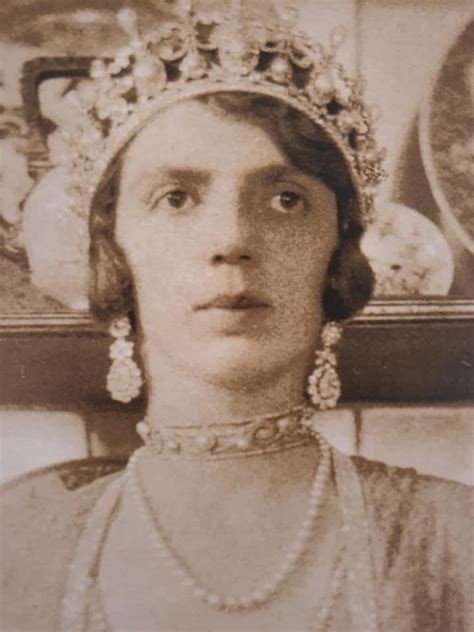
1 note
·
View note
Text

FLP POETRY BOOK OF THE DAY: Falling Into the Diaspora by MaryAnn L. Miller
ADVANCE ORDER:
https://www.finishinglinepress.com/product/falling-into-the-diaspora-by-maryann-l-miller/
MaryAnn L. Miller was born in Western Pennsylvania the day before the attack on Pearl Harbor. Some of her early memories are listening to the casualty lists on the radio, playing with ration cards, and parents rushing to close the curtains during air raid blackouts. The story of Princess Mafalda of Savoy was happening in Italy at that same time. Miller’s mother was named after the Princess, one of many Italian immigrants scattered throughout the Diaspora, perhaps aware of the suffering of their relatives remaining in Europe, but unable to change the horrors of Hitler and the Third Reich.
PRAISE FOR Falling Into the Diaspora by MaryAnn L. Miller
Under the dual skies of Italy and Western Pennsylvania, these poems take us on the journey of two Mafalda’s and the push and pull of their seemingly diametrically opposed lives. But what we find are the very human commonalities of suffering, joy, and, in particular, the small and large moments in every life, onto which reckoning seems to hinge. Miller is a keen and astute student of history, both the personal and the public, and shows us a glimpse into a world pulsating with the delights of arias, princesses, love, sun-warmed figs, grapevines, and Puccini as well as the trials small town struggles, desperation, the quotidian and royalty under siege. Fact and fable mingle with the careless hopes and desperate dreams that provide a portrait of lives’ worth knowing– and for our own betterment, taking to heart and learning a lesson or two from along the way.
–Michelle Reale, Author of Blood Memory: Prose Poems, and Confini: Poems of Refugees in Sicily
Falling Into the Diaspora is more than a poetry collection, it’s a book of poems— a long story plotted into poetry. What a brilliant idea, taking Princess Mafalda of Savoy and collating her with a mother “… a vindictive raven, flying out of a coal mine in Western Pennsylvania.” Mafalda met a bitter end in Buchenwald, and Miller takes us back and forth across time, mixing the elegant with the colloquial, to mesh history with present time. It’s rare to find a conceit so arresting and managed so flawlessly. This writer knows that structure is the way to grip us tight. Yes, Miller’s breath is on every page—witty, painful, original. She has written a masterwork.
–Grace Cavalieri, Maryland Poet Laureate
Don’t be fooled by its title, MaryAnn L. Miller’s book is about tyranny and rebellion braided by the powers of fate, mystery and a deep abiding respect for personal history that leaves readers captivated. Small miracles are elevated to milestones in the story of immigration and assimilation with characters like Miss Reed who “… kept my mother’s name on a slip of silk paper inside her maiden bra.” The Midwife’s Tambourine morphs into a mandala with “… a history in blood and water that will not change.” Miller is deeply engaged with the world of our mothers and conveys her pursuit with brilliant and precise lyricism that leaves an indelible impression.
–Maria Lisella, Author of Thieves in the Family, Academy of American Poets
Please share/please repost #flpauthor #preorder #AwesomeCoverArt #poetry #read #poetrybook #poems #history
#poetry#preorder#flp authors#flp#poets on tumblr#american poets#women poets#finishing line press#small press#book cover#books#publishers#poets#poem#smallpress#poems#binderfullofpoets
1 note
·
View note
Text
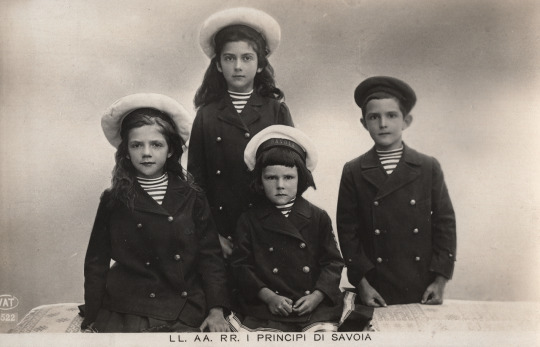
OTMAA Contemporaries: The Italian Royal Children.
From left: Princess Mafalda (1902), Princess Yolanda (1901), Princess Giovanna (1907), and Prince Umberto (1904). They would eventually joined by Princess Maria Francesca (1914).
#otmaa contemporaries#yolanda of savoy#mafalda of savoy#giovanna of savoy#maria francesca of savoy#umberto ii#my collection#italian royal family
15 notes
·
View notes
Note
How did each of the four "Traitors" became a part of the Sliver Field Council in the first place?
Greetings Anon ^^
I believe Thomas was selected, not only because he had two PHDs, but also because his own father was, a well-regarded and respected politician, at least once. Thomas was not expecting it, but accepted, hoping to use, both his knowledge in economics and science for the better of humankind.
Nikolai, honestly got chosen because of Thomas recommendation, believing that Akdow was a great member and representative of his home country. Nikolai was honestly surprised when he got the invitation but accepted, hoping to make some change in the world.
Giordano was selected by the current monarch of Italy, Queen Mafalda the Third of Savoy, she knew Giordano and his parents well, and was confident he would, not only be a good representative of Italy, but a good member of the council in general. He was nervous and worried at first, but if the Queen, who he swore his loyalty to, believed in him, he would accept.
Manatena was chosen by the government of Madagascar, because they believed with her knowledge, kindheartedness but also her being good with negotiations would make her the perfect candidate for being a member of the council of the Silver Field. Seeing in it an opportunity, to perhaps, bring more peace upon the tense situation on the world, so that children could grow up happy and with a future, she accepted.
Yours sincerely
Bowler
#CannellonI#Cannelloni#Roadkillerz#RKZ#Roadkillerz OC#RKZ OC#Thomas Lieberg RKZ#Thomas Lieberg#Nikolai Akdow RKZ#Nikolai Akdow Roadkillerz#Giordano Castellani RKZ#Giordano Castellani#Cannelloni RKZ#Giordano Castellani RKZ#Giordano Castellani#Manatena Berrocal RKZ#Manatena Berrocal#Ask#Anonymous#Anon#Silver Field RKZ#Silver Field#The Silver Field RKZ#The Silver Field
0 notes
Text

Crown Prince Umberto of Italy with his sisters Yolanda and Mafalda, mids 1910s.
#crown prince umberto of italy#prince umberto of piedmont#princess mafalda of savoy#italian royal family#italian royal#italian royalty#1910s#mids 1910s#princess yolanda of savoy
18 notes
·
View notes
Text
Mafalda de Saboia, Queen of Portugal (Wife of King Afonso I of Portugal)

Reign: January/June of 1146 – 4 of November of 1157
Sucessor: Dulce de Aragão
Mafalda of Savoy (1125– 3 December 1157/58) was Queen of Portugal. after her marriage to King Afonso Henriques, the first sovereign of Portugal, whom she married in 1146.
She was the second or third daughter of Amadeus III, Count of Savoy, Piedmont and Maurienne, and Mahaut of Albon (the sister of Guigues IV of Albon, "le Dauphin"). One of her aunts, Adelaide of Maurienne, was queen consort as the wife of King Louis VI of France, and one of her great-granduncles was Pope Callixtus II whose papacy lasted from 1119 until 1124, the year of his death.
Her father had participated in the Second Crusade and this could have been one of the reasons why she was chosen as the consort of Portugal's first monarch. Such an alliance would contribute to expelling the Moors from Portuguese territory and would also show the new King's independence by selecting a wife outside the sphere of influence of the Kingdom of León. It is also possible that he was not able to select one of the infantas from the neighboring Iberian kingdoms due to reasons of consanguinity. The wedding could have also been suggested by Guido de Vico, the papal representative in the Iberian Peninsula who had been one of the witnesses of the Treaty of Zamora in 1143.
Mafalda first appears with her husband on 23 May 1146 confirming a donation that had been made previously by her mother-in-law, Teresa of León, to the Order of Cluny. She was very devoted to the Cistercian Order and founded the Monasterio of Costa in Guimarães
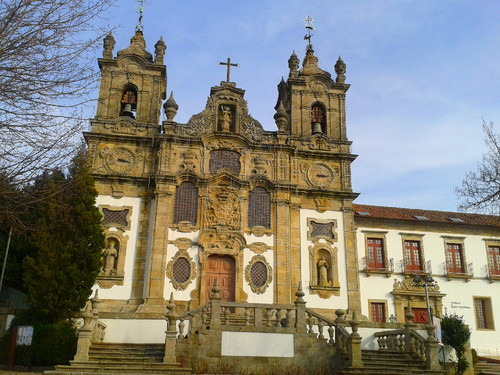
and a hospital/hostel for pilgrims, the poor and the sick in Canaveses. She stipulated in her will that this hospital was to be kept always clean, that it should be furnished with good and clean beds and that, if any of those lodged at the institution should die there, three masses were to be celebrated for the salvation of their souls.
Queen Mafalda died in Coimbra on 3 December 1157 or 1158 and was buried at the Monastery of Santa Cruz where her husband, who survived her by more than twenty-seven years, was later interred. She was survived by six of her seven children, only three of whom, infantes Sancho, Urraca and Teresa, would reach adulthood .
Although the Annales D. Alfonsi Portugallensium Regis, record that the wedding of Afonso and Mafalda was celebrated in 1145, it was not until a year later, in May 1146, when they both appear in royal charters. Historian José Mattoso refers to another source, Noticia sobre a Conquista de Santarém (News on the Conquest of Santarém), which states that the city was taken on 15 May 1147, less than a year after their marriage. Since at that time no wedding ceremony could be performed during Lent, Mattoso suggests that the marriage could have taken place in March or April of 1146, possibly on Easter Sunday which fell on 31 March of that year. The groom was almost thirty-eight years old and the bride was about twenty-one years old. The children of this marriage were:
Henrique (5 March 1147 -June 1155), named after his paternal grandfather, Henrique, he died when he was only eight years old. Despite being just a child he represented his father at a council in Toledo at the age of three. He died in 1155, shortly after the birth of his brother Sancho.
Urraca (1148 –1211), married King Ferdinand II of León and was the mother of King Alfonso IX. The marriage was subsequently annulled in 1171 or 1172 and she retired in Zamora, one of the villas that she had received as part of her arras, and later at the Monastery of Santa María in Wamba, Valladolid where she was buried.;
Theresa (1151 –1218), Countess consort of Flanders due to her marriage to Philip I and Duchess consort of Burgundy through her second marriage to Odo III;
Mafalda (1153 -after 1162). In January 1160, her father and Ramón Berenguer IV, Count of Barcelona, negotiated the marriage of Mafalda to Alfonso, future King Alfonso II of Aragon who at that time was three or four years old. After the death of Ramón Berenguer IV in the summer of 1162, King Ferdinand II of León convinced his widow, Queen Petronilla, to cancel the infante's wedding plans with Mafalda and for Afonso to marry instead Sancha, daughter Alfonso VII of León and his second wife Queen Richeza of Poland. Mafalda died in her childhood at an unrecorded date.
Sancho, the future King Sancho I of Portugal (11 November 1154 –26 March 1211). He was baptized with the name of Martinho for having been born on the saint's feast day.;
João (1156–25 August 1164);
Sancha (1157–14 February 1166/67), born ten days before the death of her mother, Sancha died before reaching the age of ten. On the 14th of February according to the death registry at the Monastery of Santa Cruz (Coimbra) where she was buried.
11 notes
·
View notes
Photo
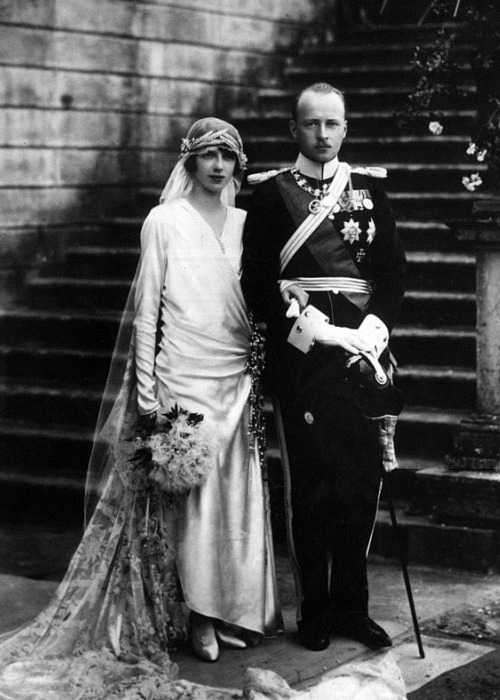
♔ Royal Wedding Tiaras ♔
Princess Mafalda of Savoy (The Landgravine of Hesse):
The Hesse Ears of Wheat Tiara
#princess mafalda of savoy#house of hesse#royaltyedit#royal fashion#royal wedding#jewellery#tiara#royal wedding tiaras#mine#hesse ears of wheat tiara
55 notes
·
View notes